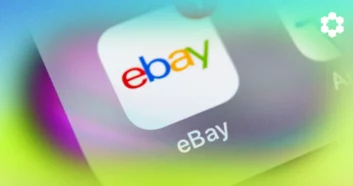This blog post is jam-packed with insights from Amazon UnBoxed 2023, the premier event for Amazon advertising. Join us as we unwrap Amazon’s freshest updates and expert insights to reshape your 2024 Amazon advertising strategy. This isn’t just a recap; it’s your fast track to the future of advertising.
Attention Economy
n today’s increasingly cluttered advertising landscape, attention is currency. The effectiveness of an ad no longer lies in the number of impressions but rather the impact on its audience. This is known as the attention economy.
To succeed in the future of Amazon selling, brands must learn to navigate the attention economy and maximize audience engagement. They must also be willing to test, learn, and innovate, finding new ways to break through for their customers.
In this blog post, we will explore three key trends that will shape the future of Amazon selling in 2023 and beyond:
The future of ad effectiveness:
Navigating the attention economy to maximize audience engagement
Test, learn, and innovate:
Recommendations on how to break through and reach customers
The future of AI-generated content in ads:
Democratizing creative production for advertising
Amazon Advertising Strategy #1: Focus on Relevant Ads to Maximize Audience Engagement
In an era where attention holds unparalleled value, brands must compete for the increasingly limited attention of consumers.
The average person encounters a staggering 6,000 to 10,000 advertisements daily. Yet, the human brain, a remarkable but finite powerhouse, grapples with the sheer deluge of content. Faced with this content bombardment, most ads become fleeting moments, either ignored or forgotten within mere seconds.
To stand out, brands must focus on creating ads that are relevant, engaging, and memorable. Here are a few tips for navigating the attention economy and maximizing audience engagement.
Create ads that are relevant to your target audience
This means understanding their needs, wants, and pain points. To refine your customer data research, consider using Amazon Attribution (AA) to gather data on user behavior, preferences, and buying patterns.
However, AA has its limitations: it doesn’t facilitate sending data back to ad channels, rendering it unsuitable for retargeting. This sets it apart from the Facebook Pixel, allowing the use of Meta-collected data for retargeting in new ad campaigns.
Amazon also discourages drawing customers away from its platform, thus hindering the utilization of AA data to power optimization features on Google and Facebook Ads.
For that reason, it’d be best to leverage off-Amazon ad platforms like PixelMe to create links and track customers across all your sales channels and increase chances of turning non-Amazon traffic into conversions.
Use storytelling to connect with your audience on an emotional level
Stories are sticky and more likely to be remembered than traditional ads. Here’s how you can approach it:
Identify your audience’s pain points:
Understand what challenges or needs your audience has. Craft a story that resonates with these concerns.
Create relatable characters:
Develop characters within your story that your audience can relate to. These characters should face similar issues or desires that your product or service can address.
Show transformation or solution:
Illustrate how your product or service transforms the characters’ lives. Emphasize the before-and-after effect. Show how their lives improved after using your product.
Emphasize emotions:
Invoke emotions that your audience can connect with. Whether it’s joy, relief, or excitement, infuse these emotions into the narrative.
Use imagery and language:
Describe scenes vividly and use language that evokes emotions. Be descriptive and paint a picture that captivates the imagination.
Highlight genuine reviews or testimonials:
Include real testimonials or stories from customers who have experienced a positive change using your product. Authenticity can significantly impact the audience.
Create a compelling Call-to-Action (CTA):
After the emotional journey, guide your audience with a clear CTA that prompts them to take the next step, like making a purchase or exploring further.
Remember, the aim is to build a connection and trust with your audience. Amazon advertising offers limited space, so craft your storytelling in a concise and impactful manner. Additionally, ensure that your story aligns with your brand identity and the values you want to convey.
Use high-quality visuals to capture attention
Images and videos are more effective at grabbing attention than text alone. It may sound like a lot of work but with Amazon’s generative AI image creator, you can now create images in just a few clicks! This tool empowers users to seamlessly integrate product images into lifestyle or brand-themed backgrounds using straightforward, natural language prompts.
Picture instructing the system to “place the tent alongside a peaceful stream nestled in a valley, surrounded by the grandeur of mountains,” and in a few seconds, it autonomously generates these images for your advertising content.
The photo can then be tweaked by entering short text prompts, while several versions can be easily created and A/B tested to optimize performance.
Use interactive elements to get your audience involved
Incorporating interactive elements into your Amazon advertising can significantly engage your audience. Here are some ways to do so:
Polls and Quizzes:
Integrate polls or quizzes related to your product or industry. For example, if you’re selling skincare products, create a quiz that suggests the best product based on skin type.
Interactive Videos or Images:
Use shoppable images or videos. Allow viewers to click on specific parts of the image or video to learn more about the features or products shown.
Live Q&A Sessions:
Host live Q&A sessions on your product page or within your advertising. Encourage users to ask questions and provide real-time responses.
Augmented Reality (AR) or Virtual Try-On:
If applicable to your product, offer an AR experience or a virtual try-on feature. This works well for fashion, cosmetics, or home decor items.
Contests and Challenges:
Create contests or challenges related to your product. Encourage user-generated content or participation and offer rewards.
Interactive Landing Pages:
Direct your Amazon ad traffic to interactive landing pages that offer experiences beyond a traditional product page. Use animations, scroll-triggered effects, or gamified elements.
Customer Reviews and Feedback:
Encourage customers to leave reviews or feedback, and make it interactive by allowing others to rate or like helpful reviews.
Personalized Recommendations:
Offer personalized product recommendations based on user behavior, purchase history, or preferences.
Note that Amazon has certain limitations when it comes to the types of interactive elements allowed. Ensure that whatever interactive feature you implement complies with Amazon’s creative guidelines and enhances the user experience without violating the platform’s policies.
Test different ad formats and placements
Split test multiple versions of your ad formats and place to see which one works best for your audience.
Here’s a systematic approach to conduct these tests:
Identify key metrics:
Determine what success means for your campaign. Is it higher click-through rates (CTR), conversion rates, or overall sales? Define the metrics that matter most for your goals.
Variations in ad formats:
Experiment with different types of amazon ads. Amazon offers Sponsored Products, Sponsored Brands, and Sponsored Display ads. Create variations within each format by changing visuals, copy, and targeting options. Use the premier Amazon ads management platform PPC Entourage to effortlessly automate and optimize your campaigns, saving you money and time.
Placement testing:
Amazon offers various placements such as search results, product detail pages, and even off-Amazon placements. Test your ads across these placements to see where they perform best.
A/B Testing:
Conduct A/B tests by running simultaneous campaigns with one variable changed at a time. For instance, test two similar ads with only the imagery different, then analyze which performs better.
Ad scheduling and duration:
Test the timing and duration of your ads. Experiment with running ads at different times of the day or specific days of the week. Analyze when your audience is most responsive.
Audience targeting:
Refine and expand your audience targeting with an off-Amazon Attribution tool like PixelMe and boost your rank in 60 days. Test different demographics, interests, or behaviors to see which segments respond better to your ads.
Keyword testing:
If using Sponsored Products or Sponsored Brands, test various keywords. Identify which keywords generate the most clicks or conversions.
Measure and analyze results:
Regularly monitor the performance of your ad variations. Use Amazon’s reporting tools or analytics to assess which formats and placements are driving better results.
Optimize and scale:
Based on the results, optimize the best-performing ad formats and placements. Allocate more budget to the successful campaigns and continuously refine your approach.
Iterate and Repeat:
Marketing is an ongoing process. Keep testing and refining your Amazon advertising strategy. Consumer behaviors and preferences evolve, so ongoing testing is crucial to stay ahead.
By methodically testing different elements of your Amazon advertising campaigns, you can gain insights into what works best for your specific audience and optimize your strategies for improved performance.
Amazon Advertising Strategy #2: Test, Learn, and Innovate to Reach More Customers

The lines between advertising, content, and commerce continue to blur. Brands must continue to find new ways to break through for their customers.
Here are three recommended Amazon advertising strategies:
Creative enhancements
Amazon Ads offers a variety of creative enhancements that can help your ads stand out from the competition. For instance, you can incorporate compelling visuals, interactive elements, storytelling, social proof, and CTAs to significantly boost the effectiveness of your ads in attracting potential customers or keeping existing customers engaged.
Sponsorship opportunities
Partnering with other brands or influencers can help you reach a new audience and build credibility. Look into Amazon’s own partner network, which includes agencies committed to bringing value from Amazon Ads to brand clients.
When considering partnerships as a part of your Amazon advertising strategy, ensure that the brands or influencers you collaborate with align with your brand values, target audience, and overall marketing goals. Establish clear terms and expectations to ensure a mutually beneficial relationship. With the right partnerships, you can leverage the credibility and reach of others to elevate your presence and sales on Amazon.
New media formats
Amazon Ads also offers a variety of new media formats, such as streaming TV ads and display ads. At the 2023 unBoxed event, Amazon unveiled Sponsored TV, “a self-service ad solution for brands of all sizes that sell on Amazon in the US to reach audiences on streaming TV services.”
This revolutionary feature enables advertisers to reach Amazon audiences on connected TV apps directly through the Sponsored Ads console. Previously confined to Amazon’s Demand Side Platform (DSP), this capability now broadens TV advertising accessibility to a wider range of advertisers without campaign minimums. It’s fantastic news for those constrained by budget limitations, granting them access to TV advertising opportunities they couldn’t tap into before.
Be sure to experiment with different formats to see what works best for your brand.
Amazon Advertising Strategy #3: Incorporate AI-generated Content in Your Ads
Generative AI is transforming the advertiser landscape, helping to open up new possibilities that were previously out of reach for small- and medium-sized businesses.
Amazon Ads is using generative AI to help businesses create advertising-ready content, such as product images, videos, and ad copy. This is democratizing creative production and making it easier for businesses of all sizes to compete on Amazon.
Here are a few ways that generative AI is being used in Amazon Ads:
Image generation.
Amazon Ads Product Image Generator can help businesses create high-quality product images, even if they don’t have a professional photographer.
Video generation.
Amazon Ads Video Builder can help businesses create engaging product videos, even if they don’t have a video production team.
Ad copy generation.
Amazon’s Sponsored Products Headline Generator can help businesses write effective ad copy for their product listings.
Adapt, Create, Succeed: Navigating the Future of Amazon Ads

In the ever-evolving landscape of Amazon advertising, the future seems to be unfolding at a rapid pace. Gone are the days when an ad’s effectiveness was based on sheer impressions. Today, it’s all about capturing the audience’s limited attention, resonating with them, and keeping them engaged.
To succeed in this landscape, brands need to navigate and master the attention economy. The three key trends—creating relevant and engaging ads, testing and innovation, and using AI-generated content—can serve as your guide toward a successful selling stint on Amazon.
The Amazon advertising strategies shared in this blog post aim to assist brands in maximizing audience engagement, breaking through the clutter, and leveraging innovative tools like analytics tools and generative AI to level the playing field for businesses of all sizes.
Additionally, the idea of strategic partnerships with influencers and other brands shines a light on the potential to amplify reach and credibility, while the adoption of new media formats and the incorporation of AI-generated content open up previously unexplored territories for Amazon advertisers.
As we step into the future of advertising, the message is clear: it’s a journey that demands adaptability, creativity, and a willingness to test, learn, and innovate. The tools and insights shared in unBoxed 2023 are not just gateways but a compass to navigate the evolving Amazon advertising landscape, shaping the strategies of tomorrow and opening doors to an array of possibilities in the advertising world.




